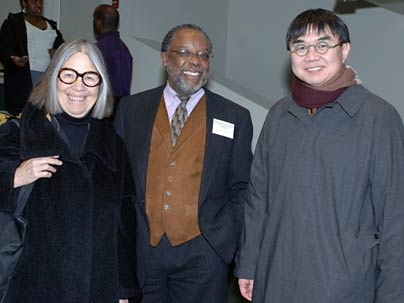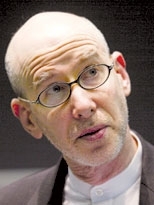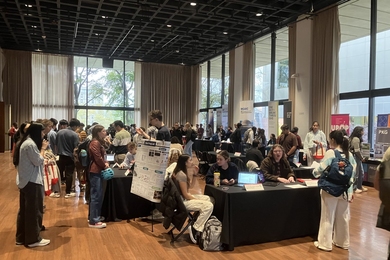Architecture has one of the worst track records for attracting minority practitioners. Why that is true, and what can be done to change it, was the topic of a two-day conference at MIT, "Architecture Race Academe: The Black Architect's Journey."
Only 1.5 percent of registered architects in the American Institute of Architects (AIA) are black, a statistic only marginally higher than it was 40 years ago, according to keynote speaker Ted Landsmark, director of Boston Architectural College. Architecture is in danger of becoming a shrinking niche profession and not providing service to all the people of the world who need architects, he said.
Although MIT is not alone in graduating small numbers of black architects (most working architects receive their degrees at historically black colleges and universities), Mark Jarzombek, professor of architecture, said he hopes that 10 years from now, "MIT will no longer be seen as an example of the problem, but an example of the solution."
"The first step to change is to recognize our own failures publicly," Jarzombek said at the conference. "We have to see the problem as a broad cultural issue in the field for whom all of us should have laid claim." The goal of the conference, he said, is to explore how to bring the issue more into the mainstream of architectural discussions.
Adèle Naudé Santos, dean of the School of Architecture and Planning, said that MIT takes on issues--such as those raised by women scientists in 1999--and doesn't shy away from them. Increasing diversity on campus is one of MIT's major priorities, she said, and to ensure that the School of Architecture and Planning helps meet Institute-wide goals, the school has hired MIT alumna Robbin Nicole Chapman as manager of diversity recruitment.
"You're taking on an entire profession that has chosen to ignore these issues," Landsmark said, pointing out that there are only 29 licensed black architects in Massachusetts. Part of the problem is lack of awareness of the field, a lack of role models, a perception that architects don't make much money and a lack of ability to develop private practices because new business is tied to social connections not readily available to young minority practitioners, he said.
Catalysts for change, Landsmark said, might include sponsored programs to introduce 6- to 14-year-olds to design professionals, because most architects, regardless of race or gender, cite early exposure to someone in the field as a factor in choosing the field; recruiting design school faculty of color outside of traditional recruitment tracks; monitoring government and foundation diversity programs to see if they work; increasing the visibility of architects of color; and collecting better data on who enters the profession.
Conference speaker Ellen Weiss, Favrot Professor at the Tulane University School of Architecture, presented a biographical sketch of Robert R. Taylor, the first academically trained black American architect. Taylor, MIT's first black graduate, went on to teach at Tuskegee Institute in Alabama, where he designed most of the campus buildings. Taylor's primarily horizontal buildings have finely tuned proportions and classical porticos, many displaying Tuskegee's richly textured homemade bricks.
A version of this article appeared in MIT Tech Talk on March 21, 2007 (download PDF).







